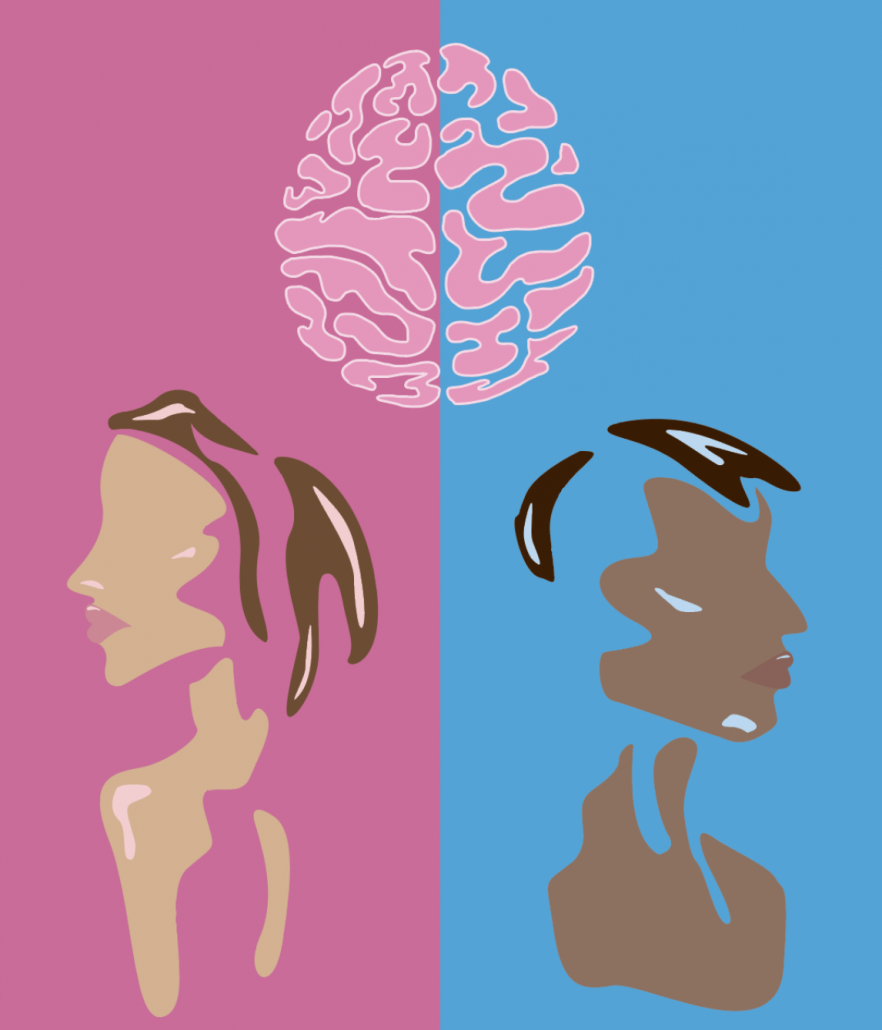Gray Matter: Gender bias in neuroscience has repercussions for feminism

In 2007, a team of researchers in Germany led by neuroscientist Kathrin Koch published a paper claiming to pin down the differences in neural activity between men and women as they process emotions. Their paper feeds into the stereotype that women are more emotional than men, and it is part of a greater problem known as neurosexism — the hunt for sex-based differences in the brain that supposedly explain stereotyped gender roles.
Publications like that aren’t just bad science; they imply that there is a legitimate basis for gender discrimination. While researchers can make a case for studying sex-based neurological differences for the sake of understanding biological mechanisms, it frequently turns into a poor extrapolation of data that attempts to substantiate misogyny.
Koch’s study is not an anomaly in scientific literature. Every few years, a new study emerges in neuroscience that claims to “finally” reveal the difference between male and female brains. Yet more often than not, they are attention-grabbing publications that lack scientific rigor.
In a brain imaging study conducted at the University of Giessen in Germany, researchers hypothesized that showing disgust and fear-inducing pictures would elicit greater activation of emotion-processing parts of the brain in women than men. When they found that men actually had more active amygdalas, the part of the brain associated with processing fear, they explained that the male participants were responding to aggression depicted in the images, appealing to long-held beliefs about aggressive behavior in men and neglecting the possibility that men could be more sensitive to fear. Similarly, in Koch’s study, the authors prefaced their findings by stating that “women are generally regarded as ‘more emotional’ than men.”
As philosopher Robyn Bluhm explains in her paper on sex-difference science, the subconscious gender biases that have been ingrained in researchers can create a self-fulfilling prophecy, in which they skew their findings to support preexisting notions. Instead of questioning the validity of these age-old assumptions, they seek evidence that supports them.
According to cognitive neuroscientist and neurosexism expert Gina Rippon, there has been a recent shift in narrative from male and female brains being different to being complementary.
A 2014 brain imaging study by researchers at the University of Pennsylvania modeled connections in the brain and claimed that male brains show greater connectivity in each hemisphere, whereas female brains have more connections between the two hemispheres. The researchers argue that these differences imply that “males have better motor and spatial abilities, whereas females have superior memory and social cognition skills,” and that these “sex differences in human behavior show adaptive complementarity.” The shift to seeking complementarity remains problematic because, in addition to defining a gender binary, they also perpetuate heteronormative thought.
Gender bias in neuroscience can have greater repercussions in science and medicine as a whole. A wide body of research has shown that doctors are more likely to downplay women’s reports of pain than in male patients, resulting in fewer pain medication prescriptions and more misdiagnoses. In extreme cases like heart attacks, where women are less likely to seek help for in fear of being seen as hypochondriacs, this issue of gender bias becomes life-or-death.
This kind of discrimination stems from the stereotype that women are more emotional or irrational, the very misconceptions that sex-difference neuroscience tries to validate. The interplay between gender bias in medicine and sex-difference research is a harmful one, in which ostensible neurological evidence of gendered behavior gives scientists and doctors a basis to justify discriminatory practices, even if those biases manifest subconsciously.
Furthermore, ideas about scientifically validated sex differences can spread beyond science and medicine. A case of neurosexism made headlines in 2017 when Google engineer James Damore published a memo arguing that women are biologically ill-suited for working in tech, citing psychological sex differences as explanations for the disproportionate lack of women in the industry. He was subsequently fired, but in an update to his original memo, Damore states that some of his colleagues had reached out to him to express their agreement despite the widespread public backlash, indicating that he was not alone in his ideas.
Both gender bias in medicine and Damore’s memo exemplifies the tangible harm that neurosexism can have on everyday thinking in a variety of industries. Researchers who continue to seek a scientific basis for gender stereotypes must recognize the role their work plays in reinforcing negative stereotypes and shift away from this line of thinking.
Jessica He is a senior writing about neuroscience. Her column, “Gray Matter,” runs every other Wednesday.

